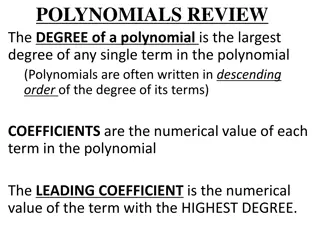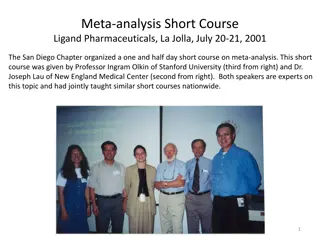Understanding Degrees of Freedom in Statistical Models
Exploring the concept of degrees of freedom in statistical modeling, this presentation discusses the importance of having adequate degrees of freedom for model fitting and interpretation. It compares different models with varying degrees of freedom, illustrating how a null model with zero parameters to estimate can provide valuable insights in statistical analysis. The visuals provided enhance the understanding of these complex statistical concepts.
Download Presentation

Please find below an Image/Link to download the presentation.
The content on the website is provided AS IS for your information and personal use only. It may not be sold, licensed, or shared on other websites without obtaining consent from the author. Download presentation by click this link. If you encounter any issues during the download, it is possible that the publisher has removed the file from their server.
E N D
Presentation Transcript
DF = 2 1 = 1. THIS IS A BIT BETTER THAN THE PREVIOUS MODEL, WHICH HAS ONE DATUM POINT AND NO DEGREE OF FREEDOM. HOWEVER, IT IS STILL UNDESIRABLE. IF DF = 1 AND THE FIT IS PERFECT, THERE IS NO ROOM (FREEDOM) FOR OTHER PLAUSIBLE ALTERNATE MODELS. AGAIN, THIS MODEL IS ALWAYS RIGHT AND CANNOT BE FALSIFIED.
THE RIGHT ANSWER IS NONE. IN A NULL MODEL, THE NUMBER OF PARAMETERS TO ESTIMATE IS ZERO. THE EXPECTED Y SCORE IS EQUAL TO THE MEAN OF Y. THERE IS NO BETA WEIGHT (REGRESSION COEFFICIENT OR SLOPE) TO BE ESTIMATED.























